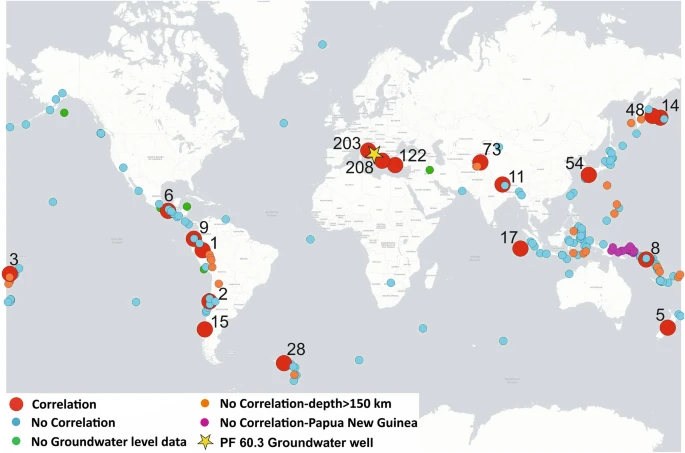
How Apennine groundwater signals earthquakes on the other side of the world
The "hunt" for the seismic precursor continues, this time with an extra element. As already documented in recent years in numerous studies, there is an association between the triggering of earthquakes and variations in groundwater circulation. What is not yet adequately known is how this phenomenon also affects teleseisms, distant earthquakes, which have occurred on other continents and whose effects are felt thousands of kilometres from the epicentre.
A new study, a collaboration between the Department of Earth Sciences of Sapienza, the National Institute of Geophysics and Volcanology and the National Research Council, has shed light on the unexpected relationship between seismicity and aquifers. The results, published on the journal Scientific Reports, represent a further step towards a possible future identification of seismic precursors in water.
For five years, the researchers monitored the level of an aquifer in Popoli, Abruzzo, central Italy, where they observed, in addition to signs left by seismic events in the immediate vicinity, anomalous behaviour of the water, the triggering engine of which was on the other side of the Earth: 18 strong oscillations were identified as an "impulsive" response of groundwater to earthquakes of magnitude greater than 6.5 occurring worldwide, even more than 18.000 kilometres away from the observation site.
"The hydrogeological and seismic investigation has shown that the seismic waves responsible for the perturbations are the Rayleigh waves that travel over the Earth's surface, reaching enormous distances – says Carlo Doglioni of Sapienza and President of Ingv. Now that we have identified the perturbations caused by distant earthquakes, we have an additional tool for distinguishing them from the precursor signals induced by nearby earthquakes."
Besides, the study proves a correlation between the distance of the earthquake and its magnitude with the amount of groundwater fluctuation: evidence that confirms the importance of these factors in controlling the behaviour of groundwater at a given site and beyond. "The nature of aquifers − says Marco Petitta of the Department of Earth Sciences of Sapienza − plays a certainly fundamental role in the response of water to seismic activity. Contrary to porous aquifers, intensely fractured carbonate aquifers, like the one we monitored in Abruzzo, are much more sensitive to deformation events. This is the aspect that becomes essential in identifying a site that is water-sensitive to seismicity."
The phenomenon recently highlighted also by a similar study carried out in China, remains a matter for further investigation by the research team. In the meantime, the results of the study create new solutions on the criteria to be taken into account when choosing the site to be monitored and represent a guide in the field of hydrogeological monitoring applied for seismic purposes.
References:
New observations in Central Italy of groundwater responses to the worldwide seismicity – Marino Domenico Barberio, Francesca Gori, Maurizio Barbieri, Andrea Billi, Antonio Caracausi, Gaetano De Luca, Stefania Franchini, Marco Petitta & Carlo Doglioni − Scientific Reports, 2020. DOI https://doi.org/10.1038/s41598-020-74991-0
Further Information:
Carlo Doglioni
Department of Earth Sciences
carlo.doglioni@uniroma1.it
Marco Petitta
Department of Earth Sciences
marco.petitta@uniroma1.it
